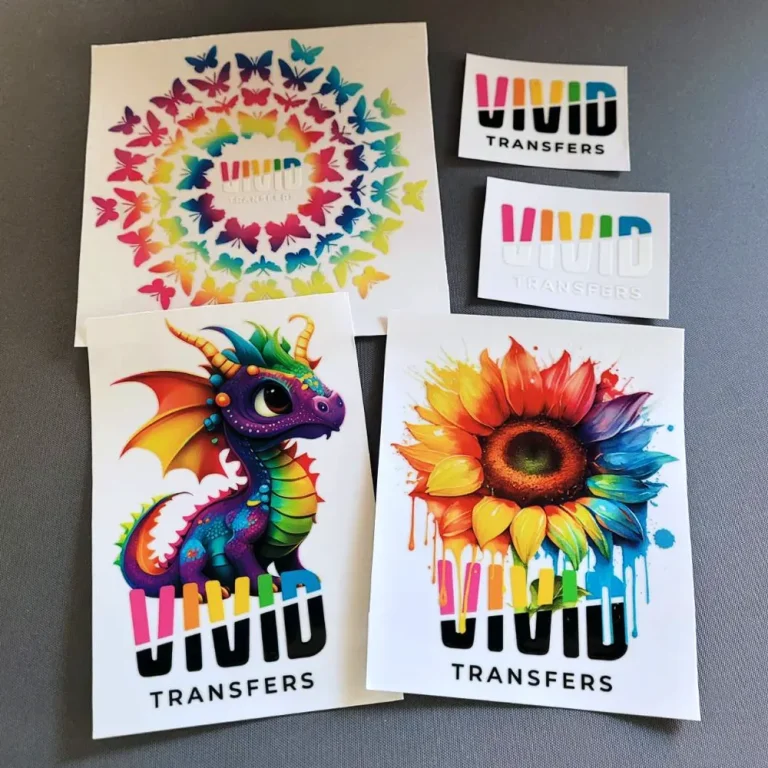UV DTF transfers are reshaping how designers move artwork from concept to durable, wearable or display-ready results. This approach blends Direct-to-Film technology with UV-curable elements to deliver fast curing and vibrant, fade-resistant images. In this guide, you will learn a practical, proven DTF printing guide and a clear art-to-transfer workflow, with emphasis on the DTF transfer process, UV printing for transfers, and finishing. Following a structured approach helps minimize waste, improve consistency, and unlock creative possibilities across textiles and hard surfaces. From cotton blends to mugs and plaques, these transfers deliver reliable color, strong adhesion, and scalable results.
Viewed through a broader lens, the technique marries UV-curable film prints with a transfer medium, often described as a UV-activated film transfer approach. In industry terms, this is part of the print-to-press workflow that emphasizes rapid curing, strong adhesion, and compatibility with fabrics and hard surfaces. Alternative language highlights the same idea as a digital-to-substrate transfer method, a protective coating assisted print on film, or a final adhesion process that happens under heat and light. LSI friendly phrases such as strong color reproduction on textiles and quick-dry transfer media surface in guides and manuals to support concept connections. Understanding these synonyms helps designers explore small runs, custom designs, or rapid prototyping with confidence.
UV DTF transfers: From Artwork to Wearable or Display-Ready Films
UV DTF transfers are a practical bridge between digital art and finished products, combining Direct-to-Film technology with UV-curable elements to cure quickly and endure wear. This approach suits small runs and custom designs, where color accuracy and detail in the art-to-transfer workflow are essential. It aligns with the DTF transfer process, ensuring each step from design to application is predictable and repeatable.
In practice, you print the artwork onto a transfer film, apply the adhesive layer, and cure as needed before moving to the application stage. Following a DTF printing guide helps choose compatible inks, films, and substrates, and applying a post-print cure can lock in the image before transfer. Make test pulls to verify edge sharpness, color fidelity, and overall durability of the UV DTF transfers.
DTF Transfer Process Deep Dive: Key Steps for Reliable Results
The DTF transfer process encompasses design, printing, powdering or liquid adhesive, curing, and final transfer to the chosen substrate. Each stage has its own controls to protect image fidelity, adhesion, and durability, especially when UV-curable elements are involved to speed up setting and improve resilience. By understanding the sequence, you can plan materials and timings with confidence.
To achieve reliable results, use test pulls, calibrate your printer and ICC profiles, and keep a color-managed workflow. This aligns with practical DTF application tips and the principles outlined in a comprehensive DTF printing guide, helping you reproduce the same results across batches and substrates.
DTF Printing Guide: Color Management, Resolution, and Materials
In the DTF printing guide, prioritize image resolution, consistent color management, and compatible materials. Print at a minimum 300 dpi with appropriate bleed to avoid edge losses during trimming or heat pressing, and embed the correct color profile for your printer. This focus helps preserve sharp edges and true color when the image becomes a UV DTF transfer on fabric or hard surfaces.
Choose materials and workspace setup that support clean handling, proper adhesion, and efficient workflows. From transfer film and adhesive powders to framing and heat press equipment, arranging a tidy, well-lit setup reduces misregistration and streamlines the art-to-transfer workflow in practical terms.
Art-to-Transfer Workflow Essentials: Preparation, Art Files, and Bleed
Art-to-Transfer Workflow Essentials: Start with clean, high-resolution artwork and define the working color space (such as Adobe RGB or sRGB). Export as lossless formats (TIFF or high-res PNG) and preserve color profiles to keep the art-to-transfer workflow on track. Clear naming, layer management, and proper bleed settings help ensure accurate reproduction when the transfer is created.
Include a test print with margins and outlines that account for potential edge shifts, especially on small details. By planning for bleed and legibility, you reduce surprises at the moment of heat application and maintain alignment across runs.
UV Printing for Transfers: Curing, Adhesion, and Durability on Textiles and Hard Surfaces
UV Printing for Transfers: When UV-curable elements are involved, curing exposure time and light intensity play a critical role in durability. Ensure the transfer film, adhesive layer, and substrate are compatible with UV curing, and plan for quick set times that fit your production flow. This approach supports strong color reproduction and adhesion on textiles, mugs, plaques, and other hard surfaces.
Finish steps matter: after transfer, you may perform additional post-press cures and careful handling to maximize longevity. Incorporating UV curing into the workflow can reduce handling time while enhancing resistance to cracking, fading, and washing on synthetic fabrics and hard substrates.
DTF Application Tips for Consistent Quality: Troubleshooting and Maintenance
DTF Application Tips for Consistent Quality: Standardize heat press temperature, time, and pressure, and ensure the substrate is flat and free of wrinkles. A consistent preheat and test press helps you verify settings before committing to production, reducing misalignment and image distortion.
Quality control and troubleshooting are essential. Compare test pulls to the digital reference, examine color shifts, edge definition, and adhesion, and keep a simple log of settings, materials, and outcomes to reproduce reliable results in future batches. This systematic approach supports the DTF transfer process from start to finish and reduces waste.
Frequently Asked Questions
What are UV DTF transfers and how do they fit into the DTF transfer process?
UV DTF transfers blend Direct-to-Film technology with UV-curable elements to deliver fast curing and durable results. In the DTF transfer process, you print artwork onto a transfer film, apply an adhesive layer, and then cure before heat-pressing onto your substrate. This approach is well-suited for small runs and color-accurate designs.
How does UV printing for transfers differ from a standard DTF printing guide?
A DTF printing guide covers color management, print settings, and workflow steps; UV printing for transfers adds a UV-curing step and often requires different film, inks, and adhesive handling. Following a DTF printing guide helps establish baseline settings, while UV workflows emphasize curing time, adhesion, and edge sharpness.
What is the art-to-transfer workflow for UV DTF transfers?
The art-to-transfer workflow for UV DTF transfers starts with clean, color-managed artwork at 300 dpi with bleed. Export in TIFF or high-quality PNG with embedded ICC profiles, then print on the transfer film, apply adhesive and cure as required. Finally, heat-press the transfer to the substrate and finish as needed.
What steps are involved in applying UV DTF transfers to fabrics, and what are some DTF application tips?
Steps: Preheat the heat press to the substrate’s recommended temperature, then position the transfer precisely. Apply heat and pressure for the specified time, then peel according to hot/warm/cold guidelines. Allow to cool and, if your system calls for it, a post-press cure. DTF application tips: run a test press on scrap, use alignment guides, maintain even pressure, and keep the transfer film clean to avoid ghosts or misregistration.
How should I prepare artwork and manage color in the DTF transfer process for UV DTF transfers?
In the DTF transfer process, artwork should be prepared with high resolution, color-managed files. Use 300 dpi, save as TIFF or high-quality PNG, and embed/maintain color profiles (e.g., Adobe RGB or sRGB) compatible with your printer ICC. Export with bleed and a color-managed workflow to minimize surprises at print time.
What curing and finishing considerations ensure durability for UV DTF transfers?
For UV DTF transfers, curing and finishing are critical. If you’re using UV printing for transfers, follow the manufacturer’s curing guidelines for exposure time and intensity. The goal is to lock in vibrancy and adhesion; post-press curing can improve wash-fastness on fabrics, while avoiding over-curing on hard surfaces.
| Aspect | Key Points |
|---|---|
| UV DTF transfers | Definition: Direct-to-Film with UV-curable elements for quick curing and durable transfers; ideal for small runs and color-accurate results; process includes printing on film, applying adhesive, and optional UV curing before finishing. |
| Preparation and artwork | Artwork/file setup: clean, high-resolution, color-managed graphics; export TIFF or high-res PNG; embed/preserve color profiles; confirm color space (e.g., Adobe RGB or sRGB) and ICC profiles with printer. |
| File settings, resolution, bleed | Set document to at least 300 dpi; include bleed; ensure legibility of text/details; anticipate potential color shifts during adhesive transfer. |
| Materials and workspace | DTF transfer film, adhesive powder or layer, framing/press equipment, and a suitable substrate; ensure substrate is clean and free of oils; maintain an organized workstation to minimize errors. |
| Printing onto transfer film | Print image on transfer film; allow to set if required by ink; apply the adhesive layer or powder; post-print cure may be needed; test a small sample for color accuracy and edge sharpness; watch for color shifts, ghosting, halos. |
| Curing and finishing | Curing is critical: cure after printing or after adhesive, depending on system; follow manufacturer guidance for exposure time and intensity; curing improves longevity and reduces handling time. |
| Step-by-step application | 1) Preheat and test; 2) Positioning with precision; 3) Heat and pressure per substrate; 4) Peel method (hot/warm/cold); 5) Post-press care and optional second cure. |
| Testing and quality control | Compare test pulls to digital reference; adjust color management; log settings and substrate type to reproduce results and reduce variability. |
| Troubleshooting common issues | Color shift/banding: check ICCs and calibrate printer; Peeling/cracking: verify adhesive and curing times; Ghosting: ensure proper color layer separation and clean film; Misalignment: use alignment guides. |
| Care, washing, and long-term durability | Wash inside-out in cold water; mild detergents; avoid harsh cleaners; air-dry or low heat; for hard surfaces, wipe with a soft cloth and avoid abrasives to protect the transfer. |
| Applications and use cases | Versatile for small businesses, designers, hobbyists; works on cotton and blends for apparel, bags, home decor; suitable for mugs and plaques with compatible substrates; supports custom orders and limited editions; enables rapid turnaround while maintaining quality. |
Summary
UV DTF transfers describe a practical, scalable path from artwork to finished application, combining Direct-to-Film printing with UV-curable elements to deliver vibrant images on textiles and hard surfaces. This approach emphasizes careful artwork preparation, precise file and color management, suitable materials and workspace setup, and a structured workflow—from printing through curing to finishing. By following these steps and applying consistent heat, pressure, and post-press care, creators can achieve durable transfers with sharp color, strong adhesion, and repeatable results across runs. The method is especially advantageous for small batches, custom designs, and projects where color accuracy matters, offering flexibility across substrates while maintaining efficiency and cost-effectiveness. With the right preparation and quality checks, UV DTF transfers can expand creative possibilities from concept to wearables and display-ready objects.



